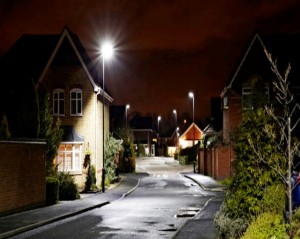 Following the announcement on 5 February, Kent County Council has now agreed to an optimised all-night street lighting policy with the introduction of new energy-efficient LED lights.
Following the announcement on 5 February, Kent County Council has now agreed to an optimised all-night street lighting policy with the introduction of new energy-efficient LED lights.
At a meeting of the Environment and Transport Cabinet Committee this afternoon, members agreed to introducing all-night lighting – with the ability to dim individual lights so that it is right for every street – once work has been completed on installing the new LED lamps.
Work to convert the county’s 118,000 street lights to LED is due to begin in residential areas next month (March) by Bouygues, who completely overhauled the Paris public lighting system.
Work is expected to be completed within 38 months and will save Kent taxpayers up to £5.2 million a year, once installed.
The draft programme for the residential areas and approximate timeline is:
- Phase 1: Ashford, Shepway and Dover – March to July 16
- Phase 2: Sevenoaks, Dartford and Gravesham – July to September 16
- Phase 3: Tunbridge Wells, Tonbridge & Malling and Maidstone – September to November 16
- Phase 4: Swale, Canterbury and Thanet – November 16 – May 17
The newly-upgraded lighting will be connected to an individual central management system (CMS) that will allow the authority to monitor and provide optimal lighting levels in the future.
Given this new flexibility, a 10-week county-wide consultation on street lighting preferences was carried out last autumn.
In addition to promoting the consultation online, deliberative groups were facilitated in Ashford, Ramsgate and Tunbridge Wells, and research was undertaken with focus groups – specifically shift workers, the elderly and university and college students.
Of the more than 3,700 responses, 63% said they preferred all-night lighting, while 37% said they preferred part-night lighting at the current level.
Whilst it is hoped the majority of residents will support the policy, it is
accepted some areas that would like to alter the pattern of the
lighting levels.
It is proposed that in these instances, requests should be
made by parish councils and/or district councils which are then taken to the
relevant Joint Transportation Board (JTB).
The JTB will consider these requests and make a recommendation to the Cabinet Member for Environment and Transport.
At the moment, the bill for Kent’s street lights and lit signs is nearly £9.5 million a year in maintenance, electricity costs and the associated carbon tax.
The £40 million project is being partly funded by a £22 million interest-free loan from SALIX, a government organisation, funded by the Department of Energy and Climate Change. It will pay for itself within eight years.
Matthew Balfour, Kent County Council Cabinet Member for Environment and Transport, said: “By embracing LED lighting in one of the largest projects of its kind in the United Kingdom, we can make significant savings to our electricity bill and cut our carbon footprint.
“We will prioritise residential areas before tackling town centres, and the main roads.”
Kent County Council 12 February 2016 https://kccmediahub.net/kent-consider-return-night-lighting745

